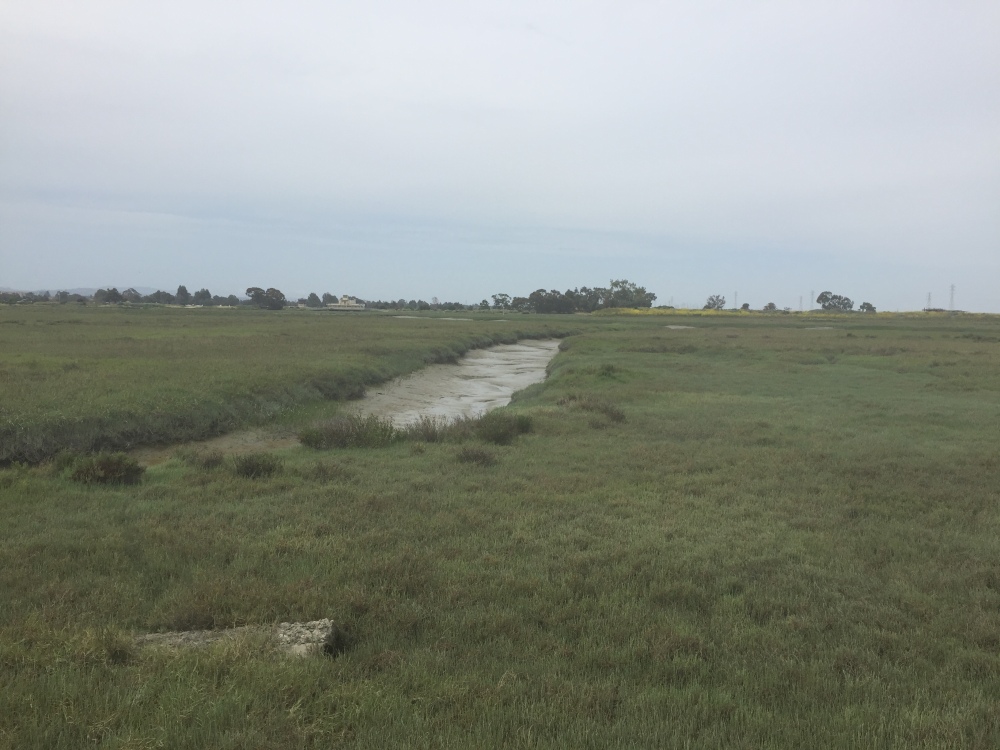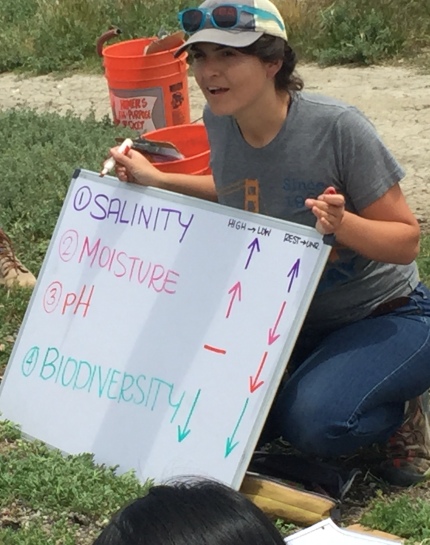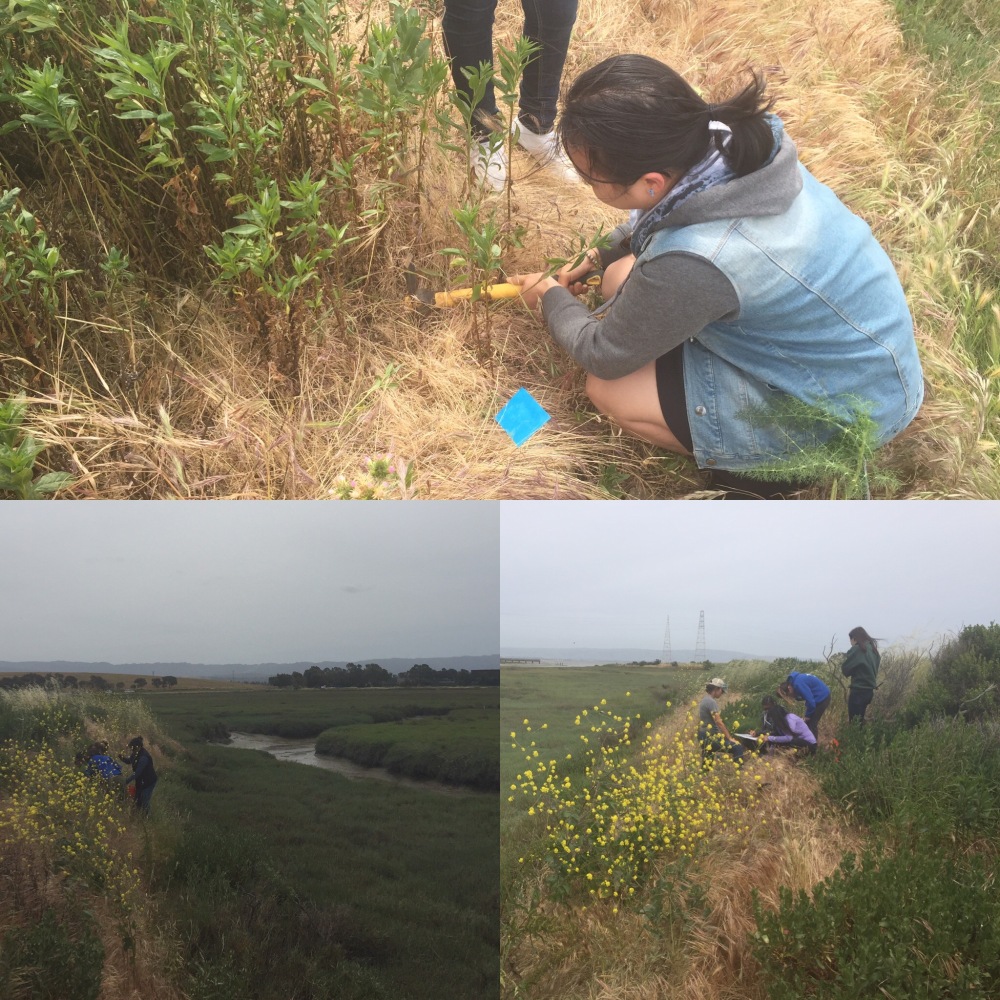I went on a field-trip recently on 4/26/16 with my AP Bio class and the ESA class (Environmental Science in Action) to a wetland where we worked with the organization, Save the Bay, to help collect data on their restored site to help see the progress and improvement of plant and animal life after wetlands in the San Francisco Bay had been thoroughly damaged in the past.

On this field-trip, I learned so much about the environment of San Francisco Bay and how destroying the wetlands really damaged the ecosystem. It was so cool to hear that cities that I have grown up in and explored such as Foster City, San Mateo, and Redwood City were all wetlands once before humans came to inhabit them. It was interesting to learn that while the Gold Rush brought so many settlers to California, it contributed to the destruction of wetlands because settlers need flat, stable surfaces to build property on and so they went about digging up the wetlands and dumping chunks of land into the ocean to clear the way for their new lives in California.
While the history of the bay and the idea of working to help its restoration was interesting, I was more interested in the hands-on work we did to collect data and learning more about the progress of restored sites. I guess you could say I was more interested in the “How can we help?” aspect over the “Why are we helping?” aspect. I do not think that I will major in environmental science, but this field-trip as well as the past LIMPETs field-trip (check out my Glimpse of the Ocean Blog Post if you haven’t already read about it), has got me really interested in helping out with more environmental and restoration projects.
Regarding collecting data from the wetland, I never thought about how soil properties could really affect an ecosystem. I mean, I knew that soil was vital for plant growth and survival, but I never considered the bigger picture of how it is a basic element that can affect many forms of life in an ecosystem. Before we went to collect data, we talked with our two guides and came up with hypotheses abut the soil quality and biodiversity for both the restored and unrestored sites that were going to be explored. I really, really enjoyed talking about this because it felt like I was in a class but I was learning outside, and then I was going to get my hands dirty to make a contribution that would improve the world as well as help me learn more about science.

I learned that salinity, moisture, pH, and biodiversity (shown above) are all important factors that help our understanding about the health of a particular environment. I really enjoyed going out and measuring these aspects using cool technology. I unfortunately did not have time to help measure biodiversity but I felt like I had so much practice measuring salinity, moisture, and pH that I stopped having to look at the directions to understand the process. I was able to remember the different tools and different methods for getting accurate data for each aspect. It was awesome to feel like a scientist and I realized at that moment that I don’t give myself enough credit for the things I know and learn because the fact that I can apply my knowledge like this is evidence that I do understand concepts and can be successful in anything I set my mind to.
Here are some images of the different teams working on collecting data. Below is a picture of my friend, Isabelle, clearing away some plants and digging up some dirt so we can take measurements.

Quick fun fact: I also learned that in this wetland specifically, mustard is an invasive plant and it the yellow plant present in the pictures above.
I definitely enjoyed this trip and would recommend it to anyone who loves science and the Earth. Our guides were really fun and showed us all the safe, edible plants growing in the ground (that we also ate like pickleweed) and giving us new ingredients that we could potentially put in a salad. (I guess you could day we also learned a bit about nutrition too :D)
I really encourage anyone to go on this trip because you can really help make a difference in preserving the balance of our ecosystem and ensuring the health of our ecosystem for generations to come. There are only two things I would change on this field-trip, but they basically all connect to one thing: Time. I really enjoyed this field trip and wish that I could have had some more time to help collect data of biodiversity. I also would have loved to hear more about the career paths of our guides and their journey in finding out how they discovered that doing this kind of work was their passion. I also think it would have been beneficial to have ESA students hear the introduction session discussing the history of the bay and what we were planning to do on the field-trip so that they could have already had a taste and broader knowledge about the “Why are we doing this?” aspect before we went on the field-trip like my AP Bio peers and I did.
I have really developed a better appreciation for the Earth due to this field-trip and I hope that anyone out there reading this also helps out in keeping our Earth healthy either by volunteering or by voting. Yes, that is right, SavetheBay needs more funding to help preserve the health of the Bay and Measure AA is prop that would require people to pay $12 more per month on taxes, but would help provide funding to SavetheBay organization. Please check out the links below for more information and please help out. We only have one Earth and one planet we can call home, so let us save it.
http://www.mercurynews.com/drought/ci_29376780/san-francisco-bay-first-its-kind-12-parcel
http://blog.savesfbay.org/2015/10/measure-aa-by-the-numbers/
Bianca,
Such a great post! I absolutely love how you ended with the short video. The song you chose was perfect. It made me want to head back to the bay. This is always one of my favorite experiences of the year. I just love getting out in to nature to talk about all the topics we have been discussing throughout the year. Your post presented a clear balance of the content of the field trip and your experience. I wish we had more time too!!!!
LikeLike
Great post! Very comprehensive, I felt I was part of the field trip reading this post. Saving the Bay is a noble cause and this field trip is a wonderful way to introduce some of the important issues of our times to high school students. I like the video as well.
LikeLike